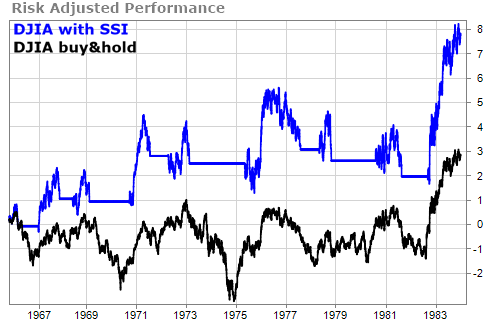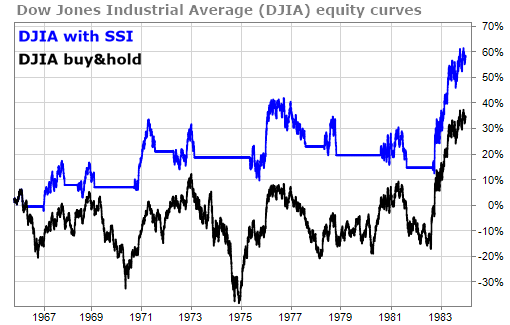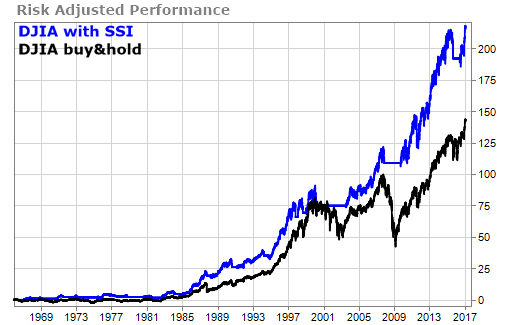We’ve shown time and again now that the TradeStops Stock State Indicator system (SSI) can make you more money and can do so under different market conditions. That’s impressive. What’s even more impressive, however, is that it can do so with less risk.
When you factor both reward and risk into the equation you see how truly powerful the SSI system is. Let us show you what we mean.
We responded to a reader’s challenge asking us how the SSI works during periods where a market goes nowhere for a long period of time. To answer that question, we applied our system to the Dow Jones Industrial Average (DJIA) between the years of 1966 and 1984.
In 1966 the DJIA was at 1,000 and 17 years later in 1983 it was also at 1,000. It was nearly two decades of a whole lot of nothing.
We’ve shown numerous time how the SSI system can improve performance during bull markets. What we showed last week is that even during the 17 year long sideways market in the DJIA, the time the SSI system still outperformed a buy and hold strategy.

For buy and hold, the VQ is 12.2%. That’s how much random movement, up or down, occurred in the buy and hold strategy. The VQ for the SSI strategy, on the other hand, was only 7.5%. That’s a LOT less volatility!
It’s obvious when you look at the chart that the SSI strategy had less risk. It avoided the big dips of 1970 and 1974. Not only did the SSI system outperform buy and hold, it preserved capital during market downturns.
To capture both the impact of reward gain and risk taken, savvy investors look at what’s known as reward to risk ratios or risk-adjusted returns. It’s critical for investors to understand the concept. At the simplest level it’s the reward gained divided by the risk taken.
Let’s look at the same chart that we looked at above but this time we’ll divide the gains (rewards) by the VQ (risk).

If, on the other hand, we look at the risk-adjusted performance, buy and hold managed 2.9 times the rewards per risk taken while the SSI strategy achieved 7.9 times the rewards gained per risk taken. That’s an improvement of over 170%.
For the record, that risk-adjusted outperformance has been sustained for not just the past 20 years … but for the past 50 years as well:

TradeSmith Team





